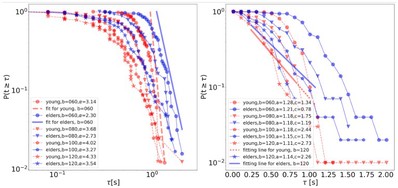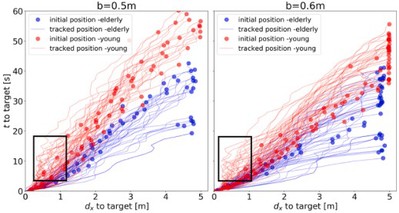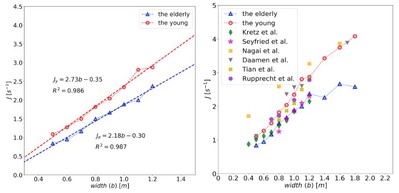Mechanisms of passing through short exits for the elderly and young adults

Problem & Motivation
1. It was found that elders are 40% slower than adults when walking in the crowded urban walkway. The comfort and safety of the elders in normal situations and emergencies should be paid more attention to for their limited mobility, especially at bottleneck environments.
2. However, how the elders reduce the traffic efficiency from the aspects of behavior and dynamics had not been analyzed and discussed. The difference of the spatial and temporal dynamic characteristics between the elders and the young adults have not been investigated for the bottleneck flow.
Methods
1. A series of experiments were carried out to study movement characteristics of the elderly through narrow exits and to compare with that of young adults. Movement angle, time lapse, waiting time, flow rate and capacity were analyzed contrastively.
2. It is found that the elderly adopts the distance-oriented strategy when moving forward to an exit, while the young adults adopt the time-oriented strategy. These strategies lead to a 26% decline in the space utilization for the elderly and more waiting phase for the young adults. Besides, ellipse and teardrop-shape spatial distribution of the high-density regions are observed for the elderly and the young adults respectively. The time headway for two consecutive elders through the exit is 0.20 ± 0.06 s longer than that of the young adults. For a certain exit, the flow rate of the elderly stream is lower than that of the young stream. The capacity for the elderly is lower than the decree capacity 2.25 p/(m s). Consequently, the exit width for the elderly is suggested to be widened to 1.25b−0.05 m from the width b for young adults.





Related Publication
Ren, X., Zhang, J., Song, W., & Cao, S. (2021). Mechanisms of passing through short exits for the elderly and young adults. Transportation research part A: policy and practice, 151, 195-213.
Download: [Paper]

